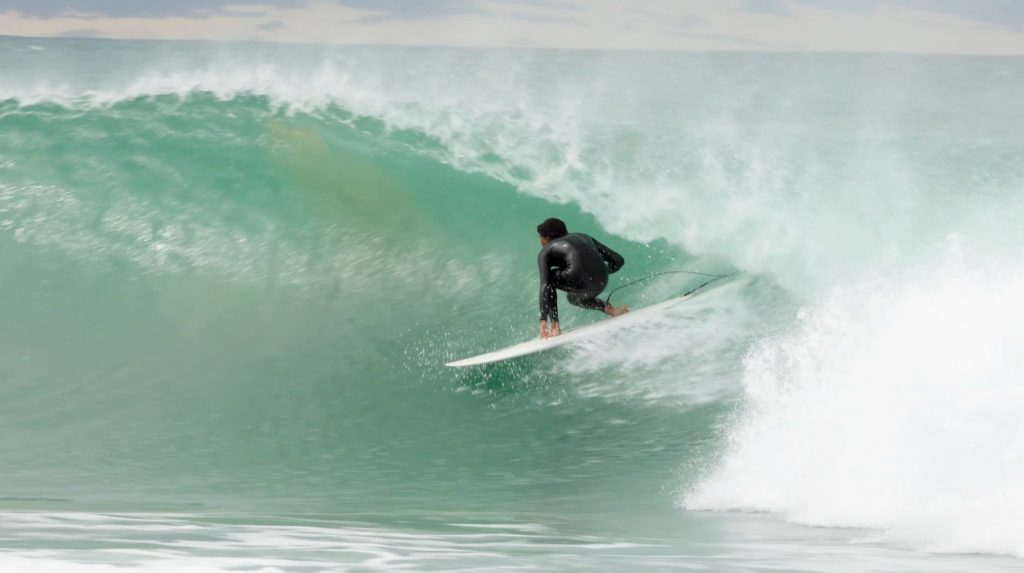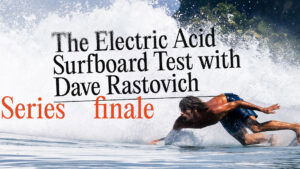A High-Performing Clip On A Mid-Performance Craft
Mikey Feb and the CI Mid don’t miss.
In the past five years, Channel Islands Surfboards has posted 146 videos on its Youtube channel.
With 13.1k subscribers, their average views per video sit right around the 20k mark.
Of their 146 videos, only five have crossed the 100,000-view threshold.
You wanna know what they are?
One is a video called “Quivers with Dane Reynolds” — a 15-minute clip sees a 2016 Dane rifling through the dozens of boards in his garage. Not a single wave is ridden.
Another is called “Mikey February Twin Pin Indo Sessions”. It involves Mikey Feb riding and breaking down his revolutionary dual-finned model in idyllic equatorial waters.
And the other three? They’re all about mid-lengths. “Introducing Channel Islands’ CI Mid — Devon Howard, 6’10”, “CI Mid: Britt Merrick Breakdown,” and most recently, “Mikey February — 6’10’ CI Mid“, have all crossed the six-figure threshold, which is incredibly revealing about what the wider (and non-content-paying) public care about when it comes to surfboards.
Britt Merrick weeps all the way to the bank.
As a celebration of CI’s latest 100k-release (seen above), we had a brief chat with the CI Mid’s favored pilot, one Mikey February.

Stab: In the past year or two, we’ve seen some clips here and there where you throw a midlength into the mix. When and where do you usually jump on one?
Mikey February: For me, I’m usually at a point break when riding a midlength, and typically when it’s a little bit on the bigger side, but not that hollow. Softer, mellow type point waves almost always have lots of open face and plenty of room to move around, which is perfect for tapping into the extra rail length. You just have to keep in mind that it’s a lot of rail to fit into a small pocket, so you have to set reasonable expectations of what you can do with a longer rail in that much space.
You appear to transition easily between performance shortboards and a midlength. What helps you to adjust to that additional length in board so seamlessly?
Your frame of mind is a big part of it. When I’m on shortboards, I’m thinking about tighter arcs, super high performance, quick direction change stuff. With a midlength, you’ve got so much more rail and volume under your feet that you need to be more patient and allow for a very different type of timing. It’s not about crushing things or smashing it. You must resist the temptation to over-surf the board. I think if you don’t keep that crusier approach in mind you may end up just fighting with the board and probably be disappointed with it.
What has been the most surprising aspect of getting to know this genre of board design?
I think some people, maybe me included, have thought of riding midlengths as kind of taking a big step backward in their surfing—like, they are only for going straight and super slow. Maybe it depends on the shaper, or the kind of midlength design you get, but I found that when I first got mine that I didn’t expect it to be as fast and responsive as it was. My 6’10” 2+1 gave me a lot of drive and squirt off whatever part of the wave I was pushing into. You aren’t cracking the lip or throwing fins like a shortboard, but there are certain moments that translated a flowy shortboard approach really well.
What have you learned from riding a midlength?
I’ve enjoyed figuring out the whole aspect of shifting my foot placement up to several times during the ride. Because there is a much wider sweet spot than what you’d get on a shortboard, you can move your feet forward and back on the deck, which I learned helps you accelerate when needed, as well as allow you to turn from different places on the board. That foot movement helps provide variations in your turns and helps position you in places of the wave you may not typically access on a shortboard.














Comments
Comments are a Stab Premium feature. Gotta join to talk shop.
Already a member? Sign In
Want to join? Sign Up